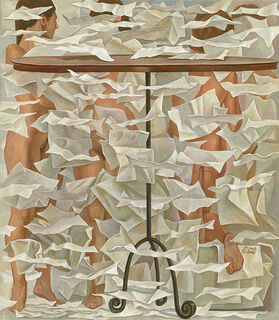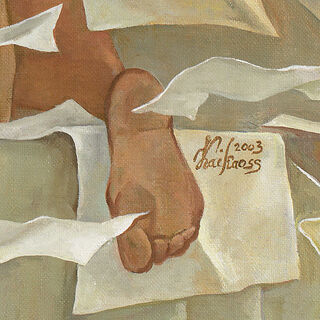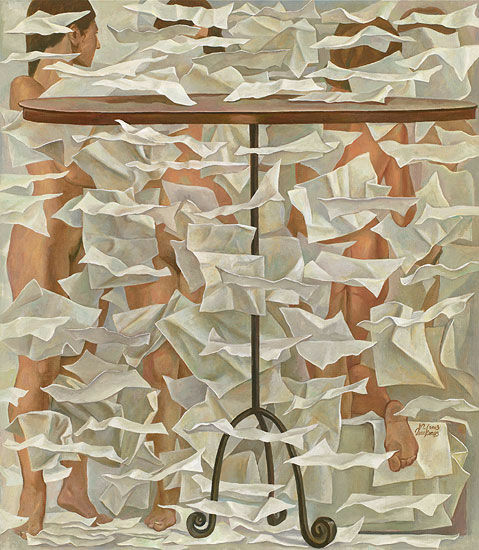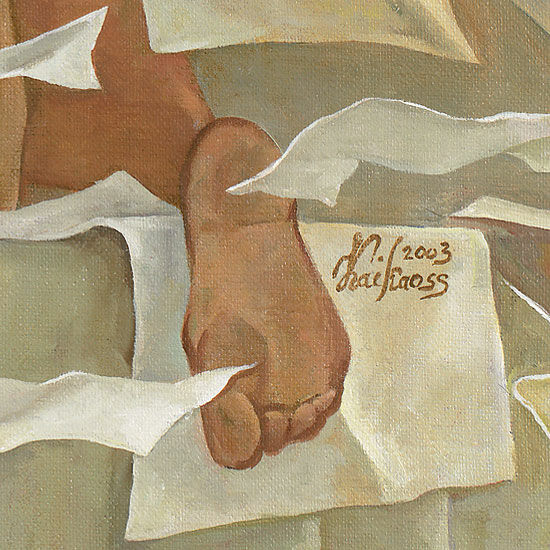Picture "Fall of Leaves" (2007), on stretcher frame


Picture "Fall of Leaves" (2007), on stretcher frame
Quick info
ars mundi Exclusive Edition | limited, 299 copies | numbered | signed by hand | reproduction, Giclée print on canvas | stretcher frame | size 80 x 70 cm
Delivery time: approx. 2 weeks
Detailed description
Picture "Fall of Leaves" (2007), on stretcher frame
A white sheet of paper symbolises purity. It is ready to receive the imagination and creativity of the viewer. Kaikaoss creates the impression of white leaves trickling like snow or autumnal leaves. Behind all the superficial innocence, there are three graces. They embody chastity, beauty and love, and suggesting that the imagination mostly follows highly mundane paths.
Giclée print on artist's canvas, 2007. 299 copies limited edition. Mounted on a stretcher frame. Size 80 x 70 cm. Numbered and signed by the artist on the back. ars mundi Exclusive Edition.

About Kaikaoss
The painter Kaikaoss was born in Kabul in 1965, where he also received his first artistic training. He completed his art studies in Minsk, Belarus. This is also where his works were exhibited for the first time. Kaikaoss has lived and worked as a freelance artist in Germany since 1991. Since then, his works have been presented at numerous joint and solo exhibitions in Germany and Paris.
His style based on the surrealism of classical modernism. The influence of his idols Picasso and Magritte are obvious. He adopts their elements without, copying them. He creates independent masterpieces in a great tradition.
What distinguishes him from other artists is his profound technique and his pictorial intelligence. Kaikaoss's realistically painted pictures seem completely logical at first glance. But what at first seems "right" is doubted on closer inspection. In this way, the artist plays with our perceptual expectations in a sophisticated way.
Graphic or sculpture edition that was initiated by ars mundi and is available only at ars mundi or at distribution partners licensed by ars mundi.
Giclée = derived from the French verb gicler "to squirt, spurt".
The giclée method is a digital printing process. It is a high-resolution, large-format printout on an inkjet printer with special different-coloured dye- or pigment-based inks (usually six to twelve). The colours are fade-proof, i.e. resistant to harmful UV light. They have a high richness of nuance, contrast and saturation.
The giclée process is suitable for art canvases, handmade and watercolour paper as well as for silk.






